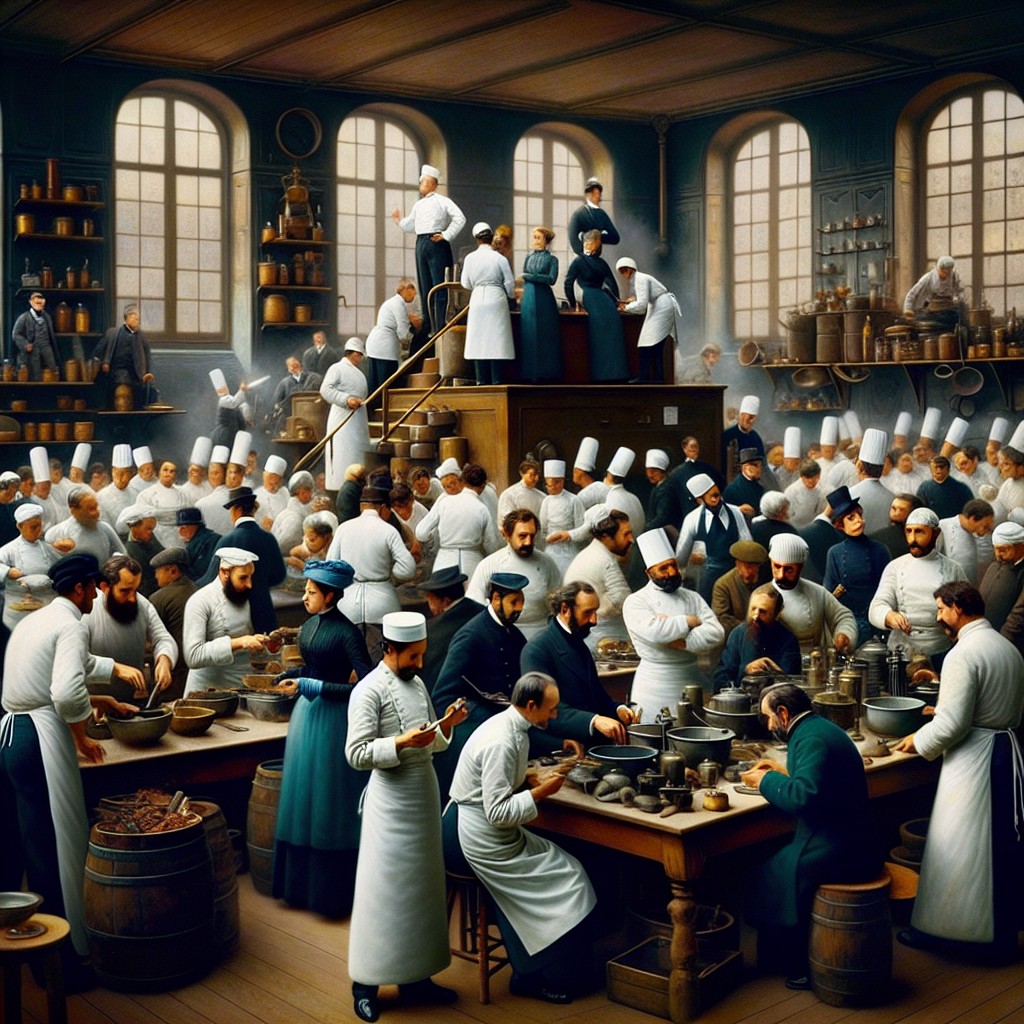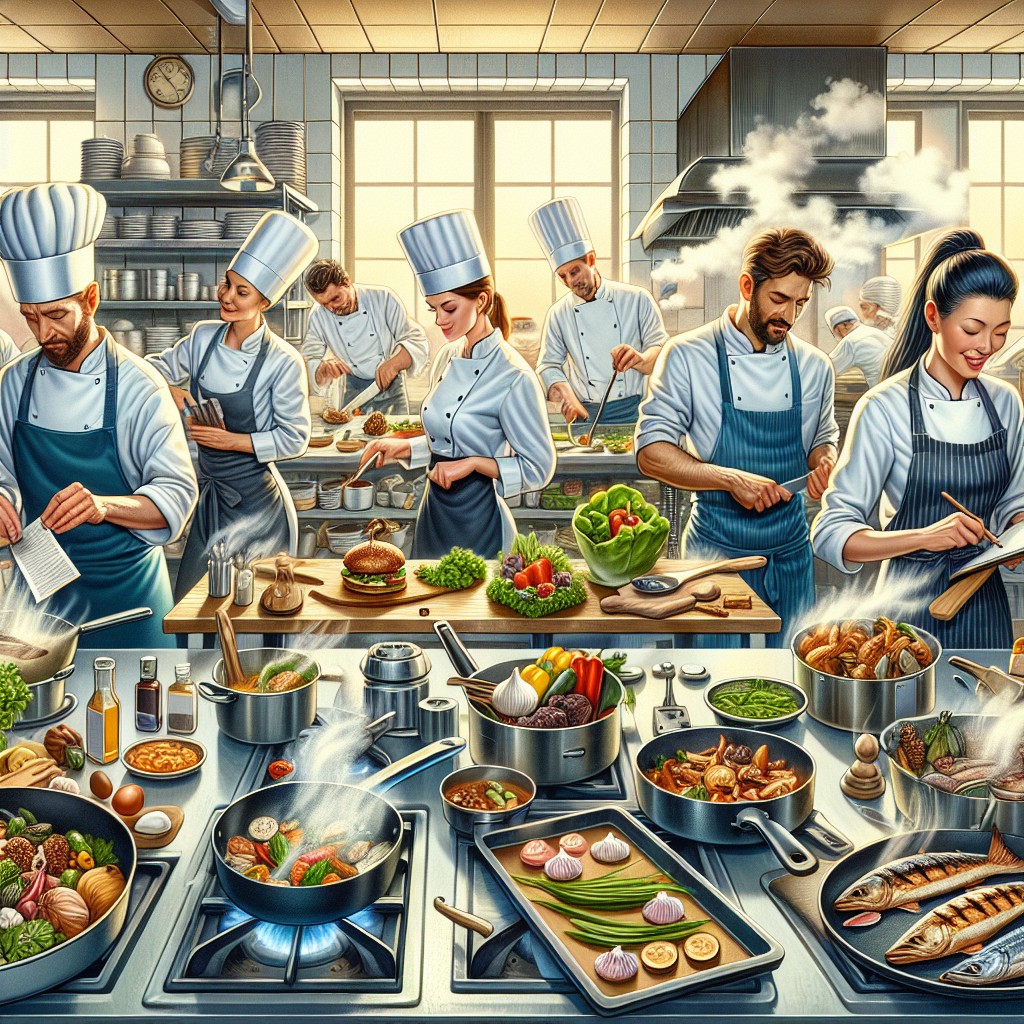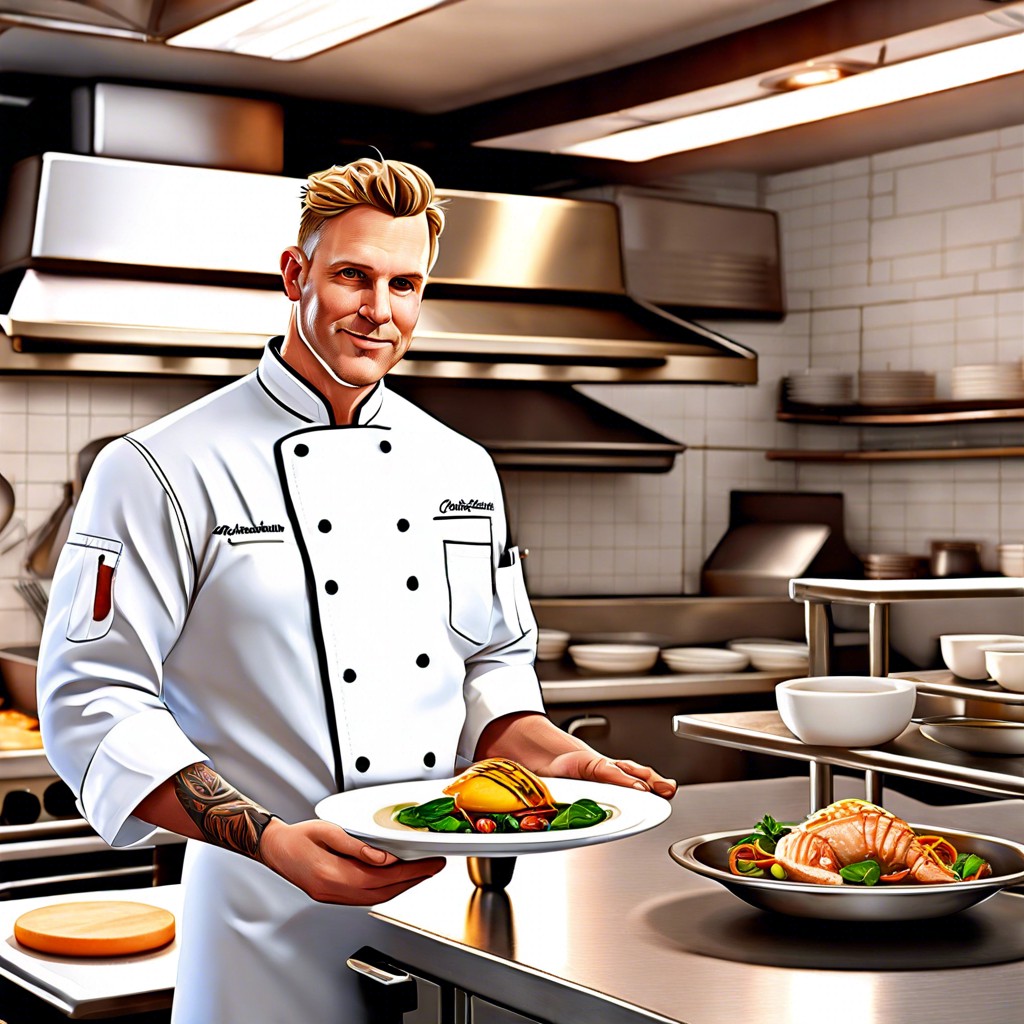Last updated on
Discover how the kitchen brigade system streamlines restaurant operations, ensuring your dining experience is as smooth as its behind-the-scenes organization.
Key takeaways:
- Streamlined Communication: Clear chain of command reduces confusion.
- Division of Responsibility: Specific tasks based on roles, ensuring quality.
- Speed and Efficiency: Minimizes overlaps, ensures timely execution.
- Professional Growth: Clear career development path within the culinary arts.
- Adaptable to Modern Kitchens: Can be adjusted to fit different sizes and styles.
What's Inside
History of the Kitchen Brigade System

Tracing its roots back to the 19th century, the kitchen brigade system was a revolutionary concept that brought military precision to the chaos of the kitchen. This systematic approach emerged from the genius of Georges Auguste Escoffier, a French chef renowned for his ability to manage large, bustling kitchen staff during his tenure at the Savoy Hotel in London.
Inspired by his experience in the French army, Escoffier standardized roles and hierarchy in the kitchen, ensuring efficiency and consistency in culinary production.
Originally designed for grand establishments and elaborate service, this methodology simplified communication and delineated clear responsibilities. It was a time when gastronomy was becoming an art, and kitchens needed order to meet the soaring expectations of clientele who sought culinary excellence.
Every role, from the head chef to the dishwasher, became a cog in a well-oiled machine, moving together harmoniously to produce gastronomic delights. By implementing this system, Escoffier ushered in a new era of professionalism in cooking, forever changing how kitchens operate.
Definition and Purpose of a Kitchen Brigade System
Imagine a well-oiled machine where each component plays a critical role in the overall function—this is the essence of the kitchen brigade system. Designed for efficiency and clarity, this hierarchical structure ensures that each section of the kitchen operates smoothly under the direction of specialized chefs and cooks.
Here’s the meat of the matter:
- Streamlined Communication: With a clearly established chain of command, messages and orders travel efficiently from the top down, reducing confusion and ensuring that everyone is on the same page.
- Division of Responsibility: Chefs and assistants are assigned specific tasks based on their roles, such as sautéing, grilling, or baking, channeling their focus and expertise to produce consistently high-quality dishes.
- Speed and Efficiency: During service, time is of the essence. The brigade system minimizes overlaps and ensures each station is primed to execute their dishes without delay, like a relay race where every runner knows their leg.
- Professional Growth: Starting at the bottom, cooks can work their way up the ladder, learning each role and its responsibilities, offering a clear path for career development within the culinary arts.
By understanding the purpose behind this meticulous structure, it’s evident how the kitchen brigade system becomes the backbone of any bustling culinary establishment.
In-depth Look At Key Positions Within the Brigade System
At the heart of the kitchen brigade system are distinct roles, each with specific responsibilities ensuring a smooth kitchen operation. The Executive Chef, or Chef de Cuisine, is the maestro, orchestrating the entire kitchen’s activities, from menu creation to plating standards. Directly under the Executive Chef is the Sous Chef, the right-hand person who steps in whenever the head chef is absent and manages much of the daily operations.
Station chefs, or Chefs de Partie, lead various sections. The Saucier crafts sauces and stews, wielding flavors to perfection. Meanwhile, the Poissonnier is responsible for all fish dishes, expertly handling delicate seafood. The Rôtisseur mans the roasting and braising station, ensuring meats are cooked exactly right.
Another core position is the Garde Manger, the cold food whiz, who creates salads, pâtés, and charcuterie. Not to be overlooked, the Pâtissier, or pastry chef, is in charge of sweets, baking bread, and crafting confections that end the meal on a high note.
Within these sections, Commis chefs work as assistants, honing their skills under the watchful eyes of the Chefs de Partie. The brigade is supported by kitchen porters who keep the workspace clean and organized, enabling chefs to focus on creating culinary masterpieces.
Auguste Escoffier’s Influence On the Kitchen Brigade
Auguste Escoffier revolutionized the culinary world with his systematic approach to kitchen operations. Drawing inspiration from the disciplined hierarchy of military organizations, he structured a professional kitchen by defining specific roles for staff members, optimizing workflow, and ensuring a high standard of food quality and service.
– Hierarchical structure: Establishing a clear chain of command, from the head chef to the line cooks, empowered staff to focus on their specific duties without confusion, streamlining communication and efficiency in the kitchen.
– Specialization of labor: Each member of the kitchen was assigned a specialized role, such as saucier, patissier, or garde manger, encouraging mastery and ultimately elevating the quality of every dish served.
– Efficiency in task execution: Escoffier’s system reduced cross-tasking and minimized the chances of errors, thereby increasing overall kitchen productivity.
– Consistency across the industry: His enduring influence ensured that the kitchen brigade became a standard model, bringing uniformity to restaurant kitchens worldwide.
Escoffier’s methodologies not only professionalized kitchen management but also laid the groundwork for modern culinary education, shaping how professional chefs are trained today.
Adapting the Kitchen Brigade System to Contemporary Kitchens
While rooted in tradition, the kitchen brigade system remains highly adaptable, bending to fit the size and style of modern kitchens. A food truck, for instance, might consolidate roles, with a single chef managing multiple aspects of meal preparation and service. In contrast, high-tech restaurant kitchens might introduce new stations—for instance, a sous-vide specialist—to keep pace with culinary innovations.
In small bistros, the executive chef often doubles as the head cook, interacting directly with the rest of the kitchen staff and even the patrons. Meanwhile, chain restaurants may divide tasks even further to increase efficiency, with line cooks narrowly specializing in assembling specific menu items.
Collaboration is key in today’s kitchen brigade. Cross-training is common, allowing staff to cover different roles as needed and fostering a deeper understanding of the kitchen’s overall operation. By embracing flexibility and cross-functionality, contemporary kitchens cultivate a dynamic environment well-suited to today’s multifaceted culinary world.
Continue reading:



